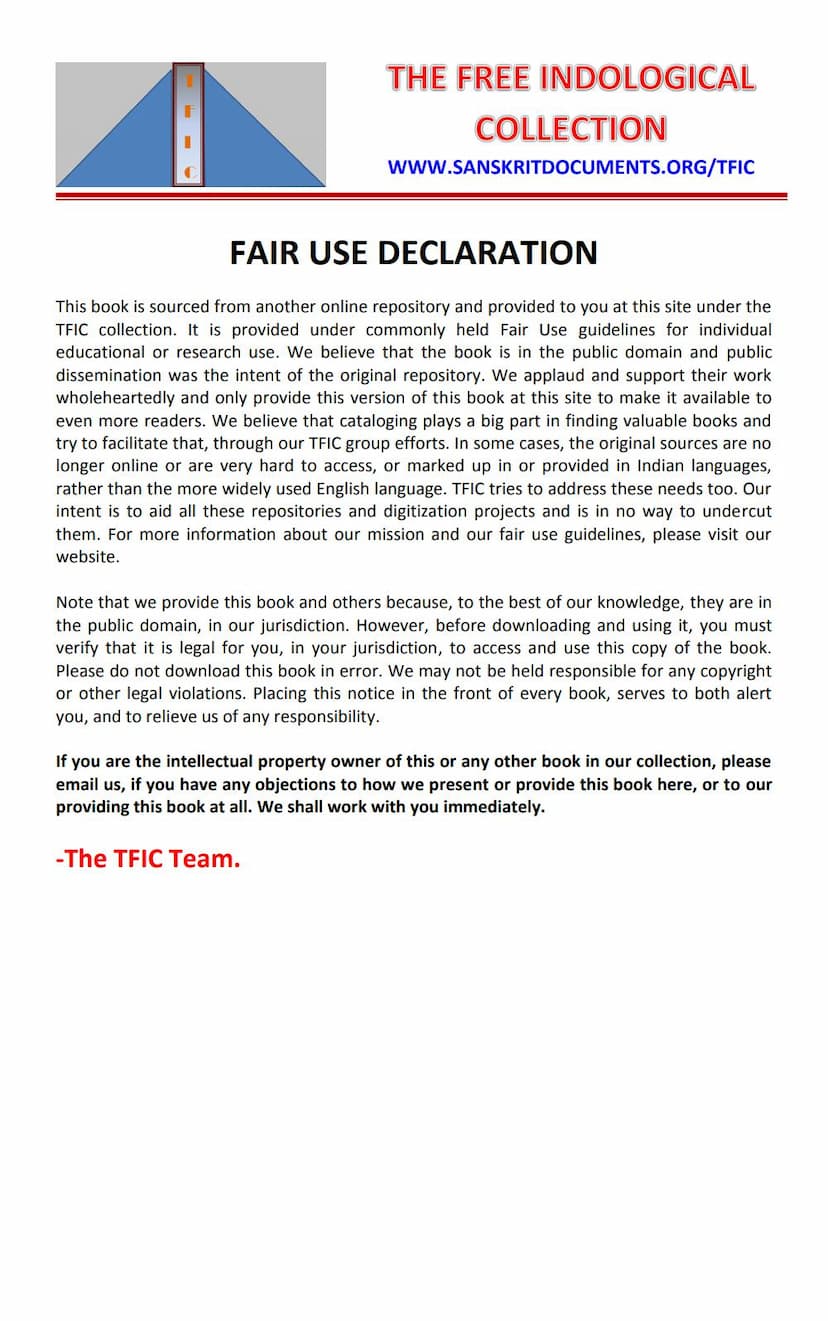Comparative Study Of Indian Science
Added to library: September 1, 2025

Summary
This comprehensive document, "A Comparative Study of the Indian Science of Thought from the Jaina Standpoint" by Harisatya Bhattacharyya, delves into the epistemological and metaphysical frameworks of Indian philosophy, with a particular focus on the Jaina perspective. Published in 1925, the book aims to systematically present and analyze the Jaina understanding of knowledge and reality in comparison to other Indian philosophical schools.
The book begins by establishing the common ground of Indian philosophy, which is characterized by its practical aim of achieving final emancipation from suffering. It then highlights the difference between orthodox and non-orthodox systems, with the latter, including Jainism and Buddhism, placing a greater emphasis on the efficacy of practice alongside knowledge for liberation.
A significant portion of the work is dedicated to exploring the Jaina concept of Jnana (Knowledge). Bhattacharyya explains that Jaina philosophy, driven by its practical orientation, developed the doctrines of Syadvada (the doctrine of conditional predication) and Naya (standpoints of interpretation) to understand things not just in isolation but in their relations and modifications. The validity of knowledge (Pramana) is defined as its agreement with the object, and false knowledge (Pramanabhasa) is categorized into modes like Biparyaya (error), Samsaya (doubt), and Anadhyavasaya (inattention).
The author then systematically breaks down the Jaina theory of knowledge into two main categories: Pratyaksha Pramana (Direct Knowledge/Perception) and Paroksha Pramana (Indirect Knowledge/Ideation).
Pratyaksha Pramana is discussed in detail, distinguishing it from the orthodox Indian and early Greek theories that emphasize the mechanical contact of senses with objects. The Jaina view posits that perception is a psychic phenomenon originating from the soul when its obscuring hindrances subside. Bhattacharyya rejects the Buddhist concept of "Nirvikalpa" (undetermined perception), asserting that all perception is "Savikalpa" (determined). Pratyaksha is further divided into:
- Samvyavaharika Pratyaksha (Ordinary/Practical Perception): This involves four psychical processes: Avagraha (grasp), Iha (attention), Avaya (determination), and Dharana (retention). It is further categorized into sensuous (Indriya-nibandhana) and non-sensuous (Anindriya-nibandhana) perception. The Jaina theory of sense organs, distinguishing between material senses (Dravyendria) and subjective sense faculties (Bhavendria), is presented as a way to avoid the pitfalls of psychological materialism.
- Paramarthika Pratyaksha (Transcendental/Occult Perception): This is dependent solely on the soul and can be incomplete or complete.
- Incomplete Transcendental Perception: Includes Avadhi-jnana (clairvoyance, knowledge of form) and Manah-paryaya-jnana (mind-reading, knowledge of others' mental states).
- Complete Transcendental Knowledge: This is Omniscience (Sakala-jnana or Kevala-jnana), which the author contrasts with the Mimansaka rejection of omniscience and the Vedanta's concept of Brahman.
Paroksha Pramana (Indirect Knowledge) encompasses several stages of ideation:
- Smriti (Recollection): The ability to reproduce and recognize a percept. The Jainas consider it a distinct source of knowledge, not merely a fainter form of perception.
- Pratyabhijna (Conception): The process of comparing percepts and forming general ideas, encompassing assimilation, differentiation, identifying essential identity, and classification. The author highlights the Jaina view's comprehensiveness compared to the orthodox schools' use of "Upamana" (analogy).
- Uha (Induction): The process of connecting concepts to arrive at generalizations and establish relationships. This is contrasted with the Nyaya interpretation of Uha and aligned with Western Induction. The concept of Vyapti (invariable concomitance) is crucial here.
- Anumana (Inference/Deductive Reasoning): The application of abstract truths derived from induction to particular cases. Jainas divide Anumana into Svartha (for oneself) and Parartha (for others), a division also found in Buddhist and Vaiseshika logic. The author analyzes various classifications of Anumana from different schools.
- Agama (Words of Authority): The final source of indirect knowledge, referring to the words of a trustworthy teacher. The Jainas consider the Tirthankaras as the ultimate authorities, and their words constitute the Jaina Agama. The author discusses the infallibility of the Agama in contrast to Vedic infallibility and the Buddhist rejection of scriptural authority. The theory of sound and the Saptabhanga (seven-fold predication), a unique Jaina doctrine reflecting their nuanced approach to reality and language, are also explored.
The book also elaborates on the fallacies related to knowledge (Pramanabhasa) and standpoints (Nayabhasa), detailing how other philosophical systems deviate from the Jaina understanding of Pramana and Naya.
In essence, "A Comparative Study of the Indian Science of Thought from the Jaina Standpoint" provides a detailed exposition of Jaina epistemology and metaphysics, situating it within the broader landscape of Indian philosophical thought. It emphasizes the practical, multi-faceted, and comprehensive nature of Jaina philosophical doctrines, particularly in its treatment of knowledge, reality, and the means to liberation. The work is meticulously comparative, drawing parallels and contrasts with various orthodox and heterodox schools of Indian philosophy, and even touching upon European philosophical parallels to illustrate certain Jaina concepts.